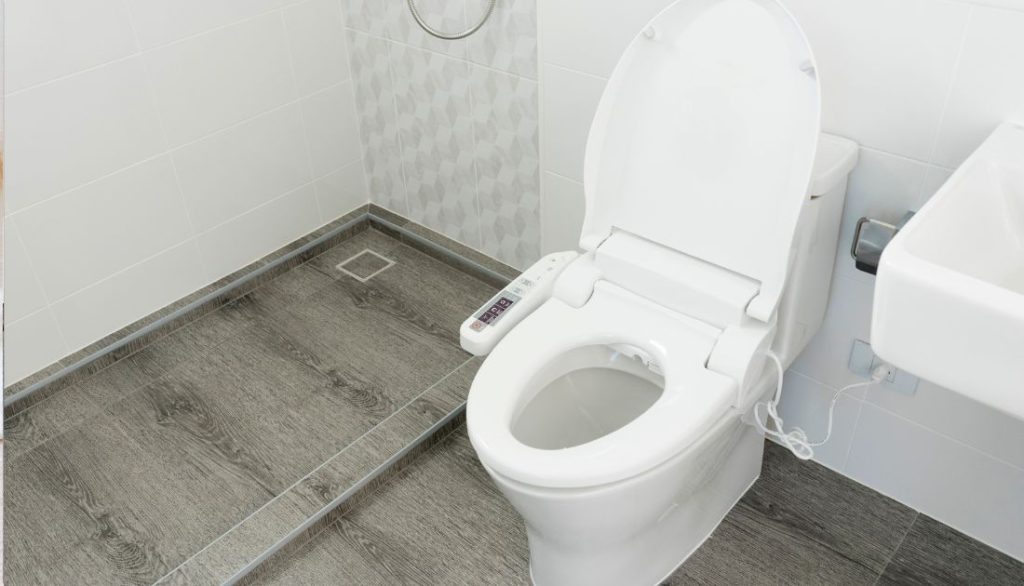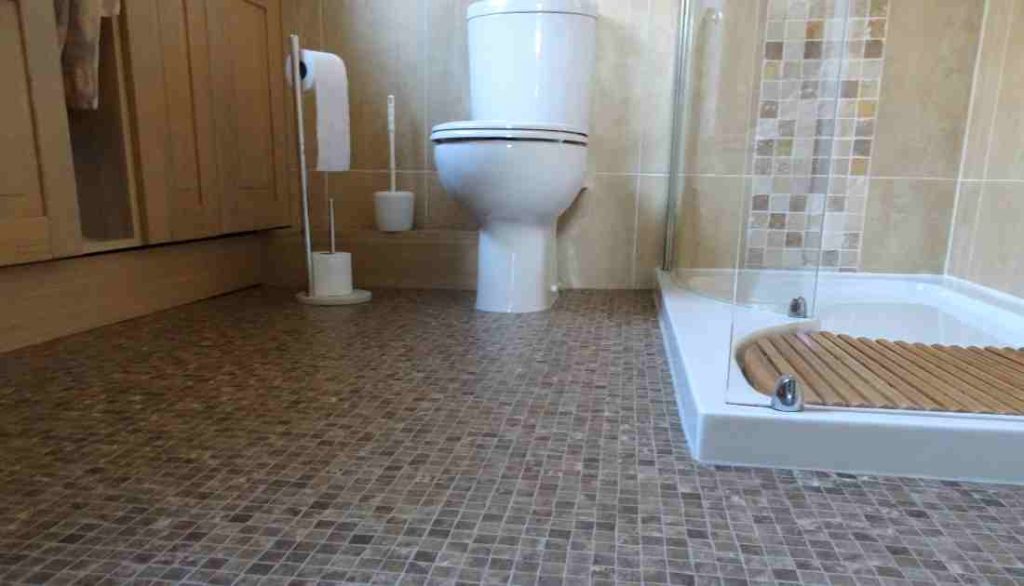Table of Contents
Properly caulking around your toilet is essential for maintaining a clean and sanitary bathroom. caulk around toilet prevents water from seeping into the floor, which can lead to costly water damage and mold growth.
It also helps secure the toilet base, preventing unwanted movement and leaks. By creating a seal, caulk ensures that dirt and bacteria cannot accumulate in hard-to-reach places, contributing to a healthier living environment.
Regularly inspecting and replacing old or cracked caulk can save homeowners from extensive repairs and maintain the integrity of their bathrooms. For a successful caulking job, use high-quality materials and follow proper application techniques, ensuring long-lasting protection and peace of mind.
Understanding the Purpose of Caulking Around Your Toilet
Preventing Water Damage: Caulking around your toilet base helps create a watertight seal, preventing water from seeping between the flooring and the toilet. This can help avoid costly water damage repairs in the future.
Maintaining Hygiene: Caulk seals out water and prevents bacteria, mold, and mildew from growing in the gaps around your toilet. By caulking properly, you can maintain a hygienic bathroom environment.
Enhancing Aesthetics: In addition to its functional benefits, caulking around your toilet can also improve the overall appearance of your bathroom. Covering up any unsightly gaps or spaces provides a clean and finished look.
Signs That Your Toilet Caulk Needs to be Replaced
Visible Wear and Tear: Check the caulk around your toilet for cracking, peeling, or discoloration. This can indicate that it has deteriorated and needs to be replaced.
Mold and Mildew Growth: If you notice mold or mildew starting to grow along the edges of the caulk, this is a clear sign that it is no longer effective in sealing out moisture.
Water Seepage: A common indication that your toilet caulk needs replacing is if you start noticing water seeping onto the floor around the toilet’s base. This could mean that there are gaps in the caulking that need to be addressed promptly before causing further damage.
Steps to Properly Caulking Around Your Toilet
Preparation is key: Prior to commencing the caulking procedure, it is important to confirm that the vicinity of your toilet is both clean and dry. Use a putty knife or caulk removal tool to eliminate any existing caulk before proceeding.
Choose the right caulk: Select a high-quality silicone caulk specifically designed for bathroom use. This type of caulk is mold-resistant and flexible, making it ideal for toilets.
Apply the caulk: Starting at one corner of the toilet’s base, apply a thin and even bead of caulk along the entire perimeter. Use a damp cloth or sponge to smooth the caulk before it dries completely.
Let it cure: Allow the newly applied caulking to cure for at least 24 hours before reusing the toilet. This will ensure the caulk forms a strong seal and prevents water leakage.

Materials and Tools Needed for Caulking
Caulk: Choose a high-quality silicone or latex caulk for bathrooms to ensure durability and water resistance.
Caulk Gun: An essential tool for applying the caulk smoothly and evenly around the toilet base.
Utility Knife: To cut the caulk tube’s tip at an angle for precise application.
Clean Cloth: Use a cloth to remove excess caulk for a neat finish.
Before starting the caulking process, gather all the materials and tools you need. Proper preparation is key to successfully sealing your toilet base with caulk, preventing leaks and potential damage in your bathroom.
Tips for Achieving a Clean and Professional Caulk Line
Clean the area: Before applying caulk around your toilet, clean the area thoroughly. Any dirt or grime can prevent the caulk from adhering properly.
Use painter’s tape: To ensure clean lines, use painter’s tape on either side of where you will be applying the caulk. This will help you create straight lines and prevent any excess from smudging onto other surfaces.
Apply with steady pressure: When applying the caulk, use steady pressure to create an even bead along the edges of your toilet. This will help give it a professional finish and seal out any water or moisture.
Common Mistakes to Avoid When Caulking Around Your Toilet
Using the Wrong Type of Caulk: One common mistake homeowners make is using the wrong type of caulk to seal around their toilet. Make sure to use a silicone-based caulk specifically designed for bathrooms, as it is waterproof and more resistant to mold and mildew.
Not Cleaning the Area Properly: Before applying caulking, it’s essential to thoroughly clean and dry the area around your toilet. Failure to do so can prevent proper adhesion and lead to a messy application that may not effectively seal out water.
Overapplying Caulk: Applying too much caulk can create a bulky, unsightly finish that is difficult to clean and maintain. Be sure to apply a thin, even bead along the base of your toilet without excess product oozing out or accumulating in corners.
Benefits of Properly Caulking Around Your Toilet
Prevents Water Damage: Proper caulking around your toilet creates a watertight seal that prevents leaks and water damage to your bathroom floor. This is crucial for maintaining your home’s structural integrity and avoiding costly future repairs.
Enhances Hygiene: Caulking around your toilet removes gaps where dirt, grime, and bacteria can accumulate. Properly sealing these areas creates a more hygienic environment in your bathroom, making it easier to clean and maintain overall.
Improves Aesthetic Appeal: In addition to its functional benefits, caulking around your toilet improves the look of your bathroom by creating a seamless finish between the fixture and the floor. This small detail can elevate the appearance of your space and give it a polished, professional look.

Maintenance and Care for Your Caulked Toilet Area
Regular caulk maintenance around your toilet is essential to prevent water damage and keep your bathroom looking clean. Here are some tips to help you care for this important area:
- Inspect the Caulk Regularly: Check the caulking around your toilet every few months for any signs of wear or damage.
- Clean the Area: Keep the caulked area clean by wiping it down regularly with a mild cleaner.
- Repair as Needed: If you notice any gaps or cracks in the caulk, repair them promptly to avoid water leakage.
These simple maintenance steps ensure that your caulking remains effective and help protect your bathroom from potential water damage.
Reasons Not to Use Caulk
One reason to avoid using caulk is that it makes repairs easier. When the caulk is used, accessing and fixing underlying issues can be difficult because you must first remove the old caulk.
Additionally, caulk has the potential to trap water. If water gets behind the caulk, it can’t escape, leading to mold and rot. This trapped moisture can cause significant damage over time, particularly in areas that are supposed to stay dry. Instead of caulk, wax seals are a viable alternative.
Wax seals can provide a strong, watertight barrier without the same risk of trapping water. They are also easier to replace when they wear out, making maintenance simpler. By avoiding caulk, you can prevent moisture problems and make repairs more straightforward, all while maintaining a reliable seal with wax alternatives.
Reasons to Use Caulk
Using caulk has several advantages, making it a popular choice. One of the main benefits is that it improves the appearance of joints and seams.
Caulk creates a smooth, finished look, which is aesthetically pleasing. It also plays a crucial role in moisture prevention, effectively sealing gaps to keep water from penetrating surfaces, thus protecting the structure from water damage.
Furthermore, using caulk often aligns with plumbing codes, ensuring that installations meet regulatory standards. This compliance is essential for safety and legal reasons.
Another significant advantage of caulk is its ability to cover uneven surfaces. Caulk can fill the gaps when surfaces are not perfectly aligned, providing a uniform seal. This versatility makes caulk a practical solution for many applications, enhancing functionality and appearance.
Taking the Middle Ground
Finding a balance between caulk and other sealing methods can be the best approach in many situations. While caulk has its benefits, such as improving aesthetics and preventing moisture, its drawbacks, like trapping water and complicating repairs, cannot be ignored.
Therefore, using caulk strategically, only in areas where its advantages outweigh the potential problems, can be a smart compromise. For instance, caulk can be used on visible joints for a clean look while avoiding its use in areas prone to water intrusion where wax seals might be more effective.
This middle-ground approach allows for the benefits of caulk in appropriate places while mitigating the risks associated with its overuse. By carefully considering each situation’s specific requirements, achieving the best of both worlds is possible, ensuring both functionality and ease of maintenance.
